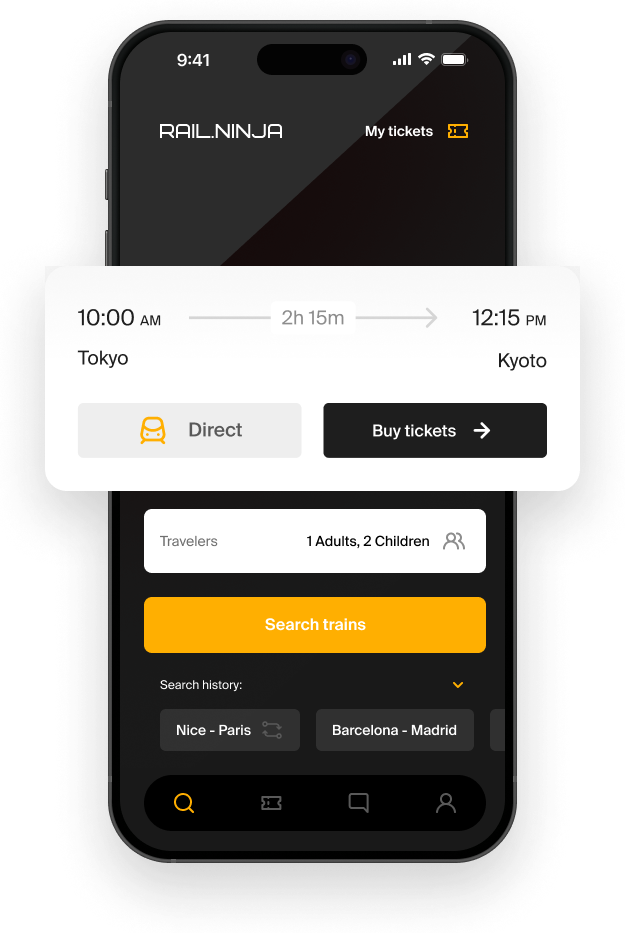JAPANESE RAILWAY SYSTEM
JAPANESE RAILWAY SYSTEM
Quick Overview of Railway in Japan
We've covered all you need to know about the Shinkansen railway here, but what about other aspects of the Japanese railway system? An extensive guide on how the Japanese railway works is a really good thing to have, but there is not always time to go into the subject properly. In this case, a brief overview should do the trick and make traveling the country easier, so let's quickly cover what you need to keep in mind if you are planning a multi-destination Japan vacation.
Japan Railways Group & Other OperatorsOriginally, the Japan rail system and everything connected to it was the responsibility of the government-owned organization called Japanese National Railways. But in 1987, the JNR was privatized and divided into 6 separate rail companies: Hokkaido Railway Company, East Japan Railway Company, Central Japan Railway Company, West Japan Railway Company, Shikoku Railway Company, and Kyushu Railway Company. Together they form Japan Railways Group (JR Group for short) that operates lion's share of all intercity and commuter rail services, including the world-famous Shinkansen. |
| Although about 70% of Japan's train network is handled by JR Group, this organization is far from being the monopolist in this field. Over a hundred enterprises provide train services in the country, and they can be divided into private rail companies and third sector companies. Private corporations stick to servicing only the private railway lines and provide carriage of passengers between the major cities as well as commuter service in urban areas. Each company offers both its own routes and the ones overlapping with the train lines offered by other companies. Third sector organizations are a collaboration between Japan's regional governments and private companies, aka they were funded together. |

Japan Train Lines
Operators are in charge of naming all Japanese rail lines, and most of them boast a unique name (with very few exceptions). This method is very convenient as the line names are even indicated on the train tickets to indicate the route (find out how to read Japanese train tickets here).
Usually, the lines are named after one of the cities along the way, a region it goes through, or just the direction of the railway line. Or the names can even be inspired by the country's history.
For example, the JR Tokaido line connecting Tokyo and Kobe was named after one of the Five Routes of the Japanese Edo Period, connecting Kyoto and the city of Edo (now known everywhere as Tokyo, the glorious capital of the country).
Book Train Tickets in Japan
Guide of Japanese TrainsOf course, the best way to get around the country is by taking a Shinkansen train. But if you are interested in train travel in Japan, it's useful to know about the other types of trains you might catch during your trip. Overall, there are five types of trains in Japan: Shinkansen (the superior of them all), limited express trains, express trains, rapid trains, and local trains. The limited express trains are not as fast as their Shinkansen brothers in arms, but they cover more destinations to compensate for the slower travel times. Their distinguishing characteristic is that they stop only at major train stations. Express trains boast about the same travel speed as the limited express trains but serve a bigger number of stations on the route, which in turn increases the travel time. Rapid trains and local trains are the slowest of the bunch, serving an even wider choice of railway stations and destinations, making them indispensable when it comes to traveling to remotely located towns and villages. All three types offer only one travel class. |



